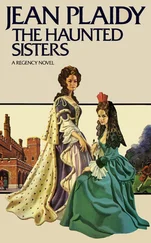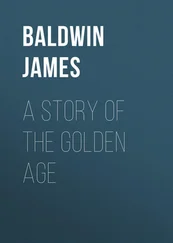James Baldwin - The Story of Siegfried
Здесь есть возможность читать онлайн «James Baldwin - The Story of Siegfried» — ознакомительный отрывок электронной книги совершенно бесплатно, а после прочтения отрывка купить полную версию. В некоторых случаях можно слушать аудио, скачать через торрент в формате fb2 и присутствует краткое содержание. Жанр: foreign_sf, на английском языке. Описание произведения, (предисловие) а так же отзывы посетителей доступны на портале библиотеки ЛибКат.
- Название:The Story of Siegfried
- Автор:
- Жанр:
- Год:неизвестен
- ISBN:нет данных
- Рейтинг книги:3 / 5. Голосов: 1
-
Избранное:Добавить в избранное
- Отзывы:
-
Ваша оценка:
- 60
- 1
- 2
- 3
- 4
- 5
The Story of Siegfried: краткое содержание, описание и аннотация
Предлагаем к чтению аннотацию, описание, краткое содержание или предисловие (зависит от того, что написал сам автор книги «The Story of Siegfried»). Если вы не нашли необходимую информацию о книге — напишите в комментариях, мы постараемся отыскать её.
The Story of Siegfried — читать онлайн ознакомительный отрывок
Ниже представлен текст книги, разбитый по страницам. Система сохранения места последней прочитанной страницы, позволяет с удобством читать онлайн бесплатно книгу «The Story of Siegfried», без необходимости каждый раз заново искать на чём Вы остановились. Поставьте закладку, и сможете в любой момент перейти на страницу, на которой закончили чтение.
Интервал:
Закладка:
Concerning the Mimer of the Eddas, Professor Anderson says, “The name Mimer means the knowing. The Giants, being older than the Asas, looked deeper than the latter into the darkness of the past. They had witnessed the birth of the gods and the beginning of the world, and they foresaw their downfall. Concerning both these events, the gods had to go to them for knowledge. It is this wisdom that Mimer keeps in his fountain.”—Norse Mythology, p 209.
In the older versions of the legend, the smith who cared for Siegfried (Sigurd) is called, as we have before noticed, Regin. He is thus described by Morris:—
“The lore of all men he knew,
And was deft in every cunning, save the dealings of the
sword.
So sweet was his tongue-speech fashioned, that men
trowed his every word.
His hand with the harp-strings blended was the mingler
of delight
With the latter days of sorrow: all tales he told
aright.
The Master of the Masters in the smithying craft was
he;
And he dealt with the wind and the weather and the
stilling of the sea;
Nor might any learn him leech-craft, for before that
race was made,
And that man-folk’s generation, all their life-days had
he weighed.”
6
Siegfried’s Journey Into The Forest.
“In the shop of Mimer, Siegfried was nowise in his proper element, ever quarrelling with his fellow-apprentices, nay, as some say, breaking the hardest anvils into shivers by his too stout hammering; so that Mimer, otherwise a first-rate smith, could by no means do with him there. He sends him, accordingly, to the neighboring forest to fetch charcoal, well aware that a monstrous dragon, one Regin, the smith’s own brother, would meet him, and devour him. But far otherwise it proved.”—Carlyle, on The Nibelungen Lied.
7
The Norns.
The Norns are the Fates, which watch over man through life. They are Urd the Past, Verdande the Present, and Skuld the Future. They approach every new-born child, and utter his doom. They are represented as spinning the thread of fate, one end of which is hidden by Urd in the far east, the other by Verdande in the far west. Skuld stands ready to rend it in pieces. —See Grimm’s Teutonic Mythology, p. 405, also Anderson’s Norse Mythology, p. 209.
The three weird women in Shakespeare’s Tragedy of Macbeth represent a later conception of the three Norns, now degraded to mere witches.
Compare the Norns with the Fates of the Greek Mythology. These, also, are three in number. They sit clothed in white, and garlanded, singing of destiny. Clotho, the Past, spins; Lachesis, the Present, divides; and Atropos, the Future, stands ready with her shears to cut the thread.
8
Regin.
As we have already observed, the older versions of this myth called Siegfried’s master and teacher Regin, while the more recent versions call him Mimer. We have here endeavored to harmonize the two versions by representing Mimer as being merely Regin in disguise.
9
Gripir.
“A man of few words was Gripir; but he knew of all deeds that had been; And times there came upon him, when the deeds to be were seen: No sword had he held in his hand since his father fell to field, And against the life of the slayer he bore undinted shield: Yet no fear in his heart abided, nor desired he aught at all: But he noted the deeds that had been, and looked for what should befall.” Morris’s Sigurd the Volsung, Bk. II.
10
The Hoard.
This story is found in both the Elder and the Younger Eddas, and is really the basis upon which the entire plot of the legend of Sigurd, or Siegfried, is constructed. See also.
11
The Norns.
The Norns are the Fates, which watch over man through life. They are Urd the Past, Verdande the Present, and Skuld the Future. They approach every new-born child, and utter his doom. They are represented as spinning the thread of fate, one end of which is hidden by Urd in the far east, the other by Verdande in the far west. Skuld stands ready to rend it in pieces. —See Grimm’s Teutonic Mythology, p. 405, also Anderson’s Norse Mythology, p. 209.
The three weird women in Shakespeare’s Tragedy of Macbeth represent a later conception of the three Norns, now degraded to mere witches.
Compare the Norns with the Fates of the Greek Mythology. These, also, are three in number. They sit clothed in white, and garlanded, singing of destiny. Clotho, the Past, spins; Lachesis, the Present, divides; and Atropos, the Future, stands ready with her shears to cut the thread.
12
The Idea of Fatality.
Throughout the story of the Nibelungs and Volsungs, of Sigurd and of Siegfried,—whether we follow the older versions or the mote recent renderings,—there is, as it were, an ever-present but indefinable shadow of coming fate, “a low, inarticulate voice of Doom,” foretelling the inevitable. This is but in consonance with the general ideas of our Northern ancestors regarding the fatality which shapes and controls every man’s life. These ideas are embodied in more than one ancient legend. We find them in the old Anglo-Saxon poem of Beowulf. “To us,” cries Beowulf in his last fight, “to us it shall be as our Weird betides,—that Weird that is every man’s lord!” “Each man of us shall abide the end of his life-work; let him that may work, work his doomed deeds ere death comes!” Similar ideas prevailed among the Greeks. Read, for example, that passage in the Iliad describing the parting of Hector and Andromache, and notice the deeper meaning of Hector’s words.
13
The Dragon.
The oldest form of this story is the Song of Sigurd Fafnisbane, in the Elder Edda. The English legend of St. George and the Dragon was probably derived from the same original sources. A similar myth may be found among all Aryan peoples. Sometimes it is a treasure, sometimes a beautiful maiden, that the monster guards, or attempts to destroy. Its first meaning was probably this: The maiden, or the treasure, is the earth in its beauty and fertility. “The monster is the storm-cloud. The hero who fights it is the sun, with his glorious sword, the lightning-flash. By his victory the earth is relieved from her peril. The fable has been varied to suit the atmospheric peculiarities of different climes in which the Aryans found themselves.... In Northern mythology the serpent is probably the winter cloud, which broods over and keeps from mortals the gold of the sun’s light and heat, till in the spring the bright orb overcomes the powers of darkness and tempest, and scatters his gold over the face of the earth.” This myth appears in a great variety of forms among the Scandinavian and German nations. In the Eddas, Sigurd (Siegfried) is represented as roasting the heart of Fafnir, and touching it to his lips. We have ventured to present a less revolting version.—See Baring-Gould’s Curious Myths of the Middle Ages.
“The slaying of the dragon Fafnir reminds us of Python, whom Apollo overcame; and, as Python guarded the Delphic Oracle, the dying Fafnir prophesies.”—Jacob Grimm.
14
In order to harmonize subsequent passages in the story as related in different versions, we here represent Siegfried as turning his back upon the Glittering Heath, and leaving the Hoard to some other hero or discoverer. In the Younger Edda, Siegfried (Sigurd) rides onward until he comes to Fafnir’s bed, from which “he took out all the gold, packed it in two bags, and laid it on Grane’s (Greyfell’s) back, then got on himself and rode away.”
15
Интервал:
Закладка:
Похожие книги на «The Story of Siegfried»
Представляем Вашему вниманию похожие книги на «The Story of Siegfried» списком для выбора. Мы отобрали схожую по названию и смыслу литературу в надежде предоставить читателям больше вариантов отыскать новые, интересные, ещё непрочитанные произведения.
Обсуждение, отзывы о книге «The Story of Siegfried» и просто собственные мнения читателей. Оставьте ваши комментарии, напишите, что Вы думаете о произведении, его смысле или главных героях. Укажите что конкретно понравилось, а что нет, и почему Вы так считаете.












